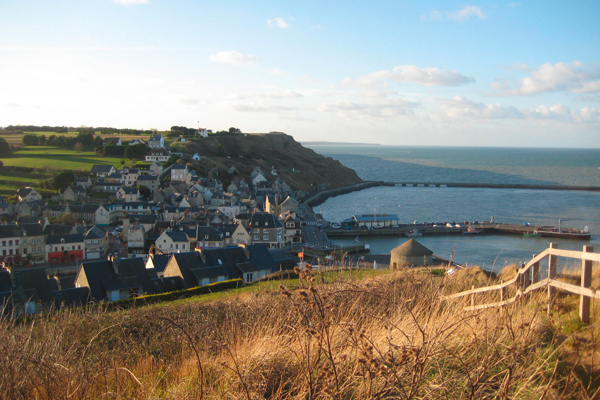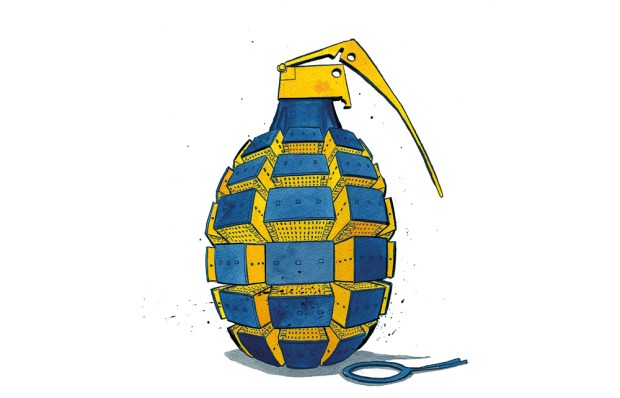There are some, I know, who for whom Normandy means the three Cs — cider, cream and calvados. But if, like me, you’re more of a three B person — beaches, bocage and the Bayeux tapestry — then the place from which to assault all three is the relatively unknown fishing village of Port-en-Bessin.
Everyone visits the spectacular US cemetery of dazzling white marble and the pillboxes at Omaha beach, and rightly so, for together with the similarly well-preserved clifftop battery taken by the 2nd Ranger Battalion at Pointe du Hoc, it’s the perfect Saving Private Ryan experience. What everyone also does, I hope, is visit the beaches where our own boys did their bit (Gold and Sword, mainly; Juno for Canadians), Pegasus Bridge (scene of the dashing glider-borne coup de main by the Ox & Bucks Light Infantry) and the excellent museum at Arromanches (where you can still see the remains of the artificial Mulberry harbour so essential for supplying the eventual allied breakout).
But what visitors tend to miss is Port-en-Bessin. They probably don’t think anything of note happened there, whereas in fact it witnessed one the most spectacular and heroic episodes of the entire D-Day landings: the defeat of a well-armed, heavily emplaced German unit three times their size by the men of 47 RM Commando.
For a fuller flavour of what those 420 young men went through, the proper place to start would be Gold Beach, 12 miles away. This was where they landed on D-Day (losing many men and much of their heavy weaponry and wireless equipment on the run in) before marching behind enemy lines (through rolling pastureland which is lushly bucolic and idyllic when not littered with the bloated corpses of shelled cattle) to take their objective from the rear on 7 June, D-Day plus one.
The port itself is straddled by two cliffs, which the Royal Marines called simply the Eastern and Western Features. Innocuous names for two fearsome obstacles: a network of blockhouses, bunkers and zigzag communications trenches, dotted with machine-gun nests, ack-ack batteries, barbed wire, minefields and even concealed flamethrowers, the remnants of which you can clamber over.
A few years back I was lucky enough to go on two reunion trips with a party of veterans. Among my companions was George Amos, who was captured while assaulting the Western Feature. He was taken into a bunker and seated next to a poster advertising Hitler’s infamous order that all captured commandos be summarily shot. How did George get away with it? By pretending to be a medical orderly and looking like he knew what he was doing while tending German wounded.
If you’ve had enough war, which I suppose is possible — though preferably not before you’ve checked out Ste-Mère-Eglise (where the US paratrooper dangled from the church spire), Villers-Bocage (where Tiger tank ace Michael Wittmann wrought such havoc), and another good museum in the Falaise Pocket (celebrating a typically heroic stand by the Poles) — there are always the birth and burial places (Falaise and Caen) of one of our earlier military heroes, William the Conqueror. Yes all right, so maybe he was one of them, but he also became one of us. And as the Bayeux tapestry propagandistically but not untruthfully tells you, his claim to the English throne was at least as good as Harold Godwinson’s.
Got something to add? Join the discussion and comment below.
Get 10 issues for just $10
Subscribe to The Spectator Australia today for the next 10 magazine issues, plus full online access, for just $10.
You might disagree with half of it, but you’ll enjoy reading all of it. Try your first month for free, then just $2 a week for the remainder of your first year.















Comments
Don't miss out
Join the conversation with other Spectator Australia readers. Subscribe to leave a comment.
SUBSCRIBEAlready a subscriber? Log in